...And it started a long time ago, here in Janów, the place where there was a border of three emperors who divided Poland like a cream cake. And there was nothing, not a bit they left on the map. But the empires collapsed, and as the master used to say, the empires flourish like flowers, and then wither with their provinces coming off... Angelus
And it began when Anton Uthemann (in years 1905-1913, a general manager of the mining company Georg von Giesche’s Erben) decided to build a model mining estate. A construction of the first estate, called Gieschewald (Giszowiec), began in 1907 and a year later the company turned to the authorities for a permit to build another one, near the Carmer and Nickisch shafts. Name of the second estate derives from the second shaft – Nickischschacht, Nikisz in Silesian, Nikiszowiec in Polish.


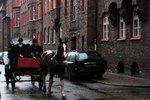


The design of the estate for 7,000 inhabitants was commissioned two eminent German architects, Emil and Georg Zillmann brothers, the same who previously designed Gieschewald. People started to move into new apartment houses since 1911. The construction was finished in 1919.
Nikisz was meant to be a unique place, to satisfy all workers’ needs including aesthetic ones. It was built of red brick; the frontages were decorated with various, ornamental elements. Nikisz doesn’t lack arcades and impressive gate arches; all of this was supposed to create a nice and comfortable place to live... it’s enough to stroll along these streets to become convinced that it is nice and comfortable till these days!

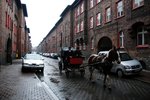
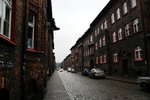
And what is behind this beautiful facade of these three-storey, almost hundred-year-old buildings? Inside, three-room apartments of the surface up to 70 square metres! Each family had an attic and a basement at its disposal and in every yard there were so-called ‘piekarnioki’, i.e. bakery furnaces.
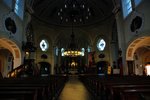
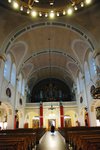
St. Anna’s Church was designed by the same architects who worked by Nikisz: that is, the Zillmann brothers. The construction started in 1914; soon it was stopped due to the war outbreak and finally finished in 1927. In the same year, 75 sound-scale organ were installed here. 5350 pipes were manufactured by Rieger company in Karniów. In the pictures, it is also possible to distinguish a baroque, made in Berlin chandelier which was built according to Zillmann’s design.


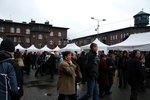
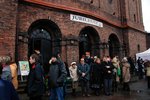
In 2008 Nikisz celebrated its hundredth birthday! Exactly 100 years ago, on 16th December 1908 during the sitting of the District Department in Katowice, the resolution was passed to grant the consent for the estate to be built. In this connection, inhabitants decided to organise a fair. The programme of the fair included, inter alia, the performances of the miners’ orchestra ‘KWK Murcki’ and ‘Kosztowioki’ band, multimedia show and the exhibition of the Janowska Group which will be mentioned in a second...


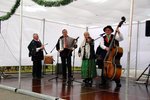
It was also possible to purchase souvenirs connected with Silesia, go for a ride on a chaise through Nikiszowiec and even try dishes and pastry prepared by inhabitants! From the funds that were raised this way, citizens want to finance the monitoring of the estate.
In Silesia in 1920s, the Treasurer, the mountain spirit Liczyrzepa, the devils and water demons called Utopce were doing quite well and people were much interested in parapsychology and esoteric science. It was in that time when Teofil Ociepka, the master of the occult sciences of Rosicrucian Lodge and the miner of the Giesche colliery, created in Janów a resilient, occult municipality. Along with his students, he tried to delve into this deeper, metaphysical world and at the same time strived for the spiritual perfection.
In about 1927, Teofil Ociepka began to paint, not for pleasure’s sake (at the beginning it caused him much difficulties) but within the reference to the divine mission of its kind. He drew the inspiration and symbolism for his paintings from the occult writings of 19th century; however, it didn’t appeal to everyone and after the criticism expressed by Tadeusz Dobrowolski, Teofil gave up painting in 1930. According to different sources, it is said that he would resume painting soon before the outbreak of the Second World War, in the middle of it or right after its end.

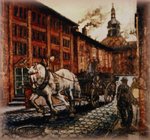
Just after the war, in autumn 1945, a local, social and cultural activist Otton Klimczok brought into existence a common room near the Wieczorek (Giesche) mine and started searching for the first, amateur painters. Among them, there was Teofil Ociepka who, together with his commune, set up here The Circle of Amateur Painters. Their interests in the occult had crucial influence on the group’s nature which was informally called after the place of its origin, that is, Janowska Group. Apart from Teofil Ociepka, the group was formed by: Paweł Wróbel, Leopold Wróbel, Ewald Gawlik, Eugeniusz Bąk Paweł Stolorz, Erwin Sówka, Gerhard Urbanek, Antoni Jaromin, Bolesław Skulik. Most of them were amateurs with the exception of Ewald Gawlik – the only one who possessed thorough training acquired at Paweł Steller’s workshop. He also learned plastic arts in a secondary school for three years and studied one year at Academy of Fine Arts in Dresden.
The group quickly became famous and the names of its members were well-known not only at home but also abroad. The end of the greatest prominence of the Janowska group falls on 1971. Due to the political resolutions, Otton Klimczok was not entrusted with the leadership of a newly-built community centre. As a result, Klimczok suffered nervous breakdown and on New Year’s Eve 1971 committed suicide.
After Klimczok’s suicide, Zygmunt Lis, an art instructor who 15 years earlier was introduced to this group by Klimczok, leaves in protest. He made a major contribution to developing creative personalities of amateurs in Janowska Group. From among eight most significant figures of the oldest hard core of this group, only Erwin Sówka lives up to these days.
Janowska Group, in the first period of its existence, did not produce joint exhibitions outside but they were produced only within Nikiszowiec. Its reputation was based on individual exhibitions and participation in collaborative exhibitions of its most famous members in prestigious galleries at home and abroad, these members were: Teofil Ociepka, Paweł Stolorz, Paweł Wróbel and Leopold Wróbel. The Group did not have so-called artistic agenda. Its members were united by the cultural community and the tradition of its microregion.1
Teofil Ociepka’s Janowska occult commune, similarly to Nikisz, is something unique on a global scale. In 2000, Lech Majewski shot an amazing and exceptional movie about it entitled Angelus... you must watch it! Below, I took the liberty of quoting the introduction to the movie:
The Astonishing ‘Janowska’s Group phenomenon’ is only possible to be expressed through a whole number of paradoxes and unusually figurative-fertile contrasts. There is an extraordinary contrast between social and cultural status and everyday life of simple miners and their deep initiation into esoteric sciences, persistent quest for metaphysical meaning of life, aspiration – through magic practices and exercises – for spiritual perfection. There is startling figurative contrast between the real Silesian world, mines and ravishing, fantastically colourful visions of Janowska Group painters – theosophists. From the historical point of view, it appears as a radical antagonism between one-dimensional, monochromatic and tedious world of real socialism and fantastic world of imagination and spirit. And finally – metaphysics, spirituality, liberation, were a conscious protest against standardisation, modernisation and materialism, as the only reality that exists in the world and also against labour transforming a man into soulless machine alongside life conditions.2
In spite of the vicissitudes of life, local problems, political and economic maelstrom, Janowska Group stood the test of time! At the fair, beside a grocery one could admire and purchase the paintings of the contemporary group members.
It is no doubt much shortened history of Janowska Group, but the data concerning it is quite extensive, so I suggest that these who are interested in group’s history continue his or her individual research. And once more I encourage you to watch the brilliant Lech Majewski’s movie entitled Angelus and to visit Nikiszowiec.
Seweryn Aleksander Wisłocki, 60 lat Grupy Janowskiej.
www.lechmajewski.art.pl